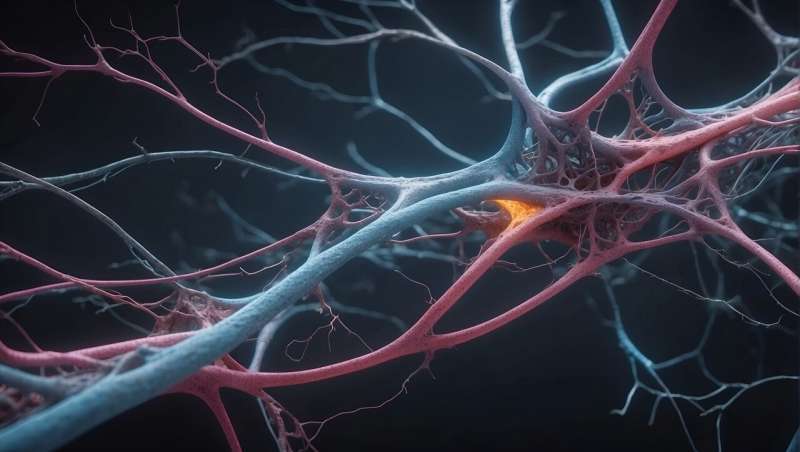New Insights into How the Brain Constructs Neural Networks for Motor Memories

Recent research reveals how the brain constructs and refines neural networks for motor memories, offering new insights into movement learning and potential therapies for Parkinson's disease.
For every motor skill you acquire, whether walking, playing an instrument, or engaging in sports, there exists a specific group of neurons in your brain responsible for initiating and controlling that movement. These neural ensembles, often called "muscle memories," enable us to perform voluntary movements seamlessly, from personal grooming to complex physical activities.
However, despite extensive research, scientists have yet to fully understand how these neural networks form during the process of learning new skills. Recent studies by researchers from Stanford University, led by Jun Ding of the Wu Tsai Neurosciences Institute, aim to uncover the mechanisms behind the development of these neural circuits and their implications for neurological conditions like Parkinson's disease.
The latest findings illustrate that neural networks involved in motor learning undergo significant transformations over time. Initially, these networks resemble a loosely connected, almost random collection of neurons. As an individual practices and refines a movement, these networks become more streamlined and efficient, establishing stable, consolidated patterns that support consistent execution.
Published across two key scientific journals—"Cell Reports" and "Nature"—these studies challenge traditional views on motor memory impairment in Parkinson's disease. The prevailing theory suggests that Parkinson's disrupts the brain's ability to activate existing muscle memories. However, Ding's research indicates that the disease might instead destabilize these memories, impairing their formation and maintenance within neural networks.
This hypothesis opens new avenues for treatment strategies. Instead of merely attempting to reactivate existing memories using dopamine-enhancing drugs like L-Dopa, a focus on stabilizing synaptic connections might prove more effective in preserving motor functions in Parkinson's patients. Such approaches could involve therapies aimed at maintaining synaptic integrity, thereby preventing memory destabilization.
Further research by Ding's team involves studying neural activity in animal models. For example, in experiments where mice learn to run on a spinning wheel or press a lever for water rewards, initial neural activity is disrupted and uncoordinated. Over time, as learning occurs, neural circuits in the striatum and cortex reorganize, becoming more coordinated and efficient. These observations suggest that the brain's wiring undergoes continuous refinement during skill acquisition.
Moreover, the studies reveal that synaptic connections between the primary motor cortex and the striatum, which are crucial for planning and executing movements, also undergo remodeling. Early in learning, individual synapses transmit mixed signals, but as proficiency develops, these connections become more specific and optimized, supporting smoother movement execution.
Understanding these processes at the cellular and circuit levels not only enhances our knowledge of normal motor learning but also provides insights into how neurological disorders may disrupt these mechanisms. If Parkinson's and similar conditions destabilize neural and synaptic stability, targeted therapies could be developed to reinforce these connections and improve motor function.
The ongoing research emphasizes that the brain's capacity to reorganize and optimize neural pathways is fundamental to learning and movement. Future investigations into how to stabilize these processes could lead to more effective treatments for movement disorders and improve rehabilitation strategies.
Stay Updated with Mia's Feed
Get the latest health & wellness insights delivered straight to your inbox.
Related Articles
Study Highlights Feelings of Dismissal and Misunderstanding Among Women with PCOS
New research from CU Anschutz highlights the challenges faced by women with PCOS, including delays in diagnosis and feelings of being dismissed by healthcare providers. The study calls for more patient-centered care approaches to better support those affected.
Breakthrough in Animal Tumor Treatment Using Radioactive Ion Beams
Researchers have successfully used radioactive ion beams to treat tumors in animals, marking a significant step forward in particle therapy technology with potential clinical applications in cancer treatment.
Early Childhood Stress and Its Long-Term Impact on Adult Health
New research links stress in childhood to the development of chronic diseases in adulthood, highlighting the importance of early intervention and community support to promote lifelong health.
Breast Cancer Survival and Its Link to Reduced Alzheimer's Risk: The Role of Radiation Therapy
Breast cancer survivors may experience a short-term reduction in Alzheimer's disease risk, especially with radiation therapy. New research highlights the impact of treatment on cognitive health in long-term cancer survivorship.



